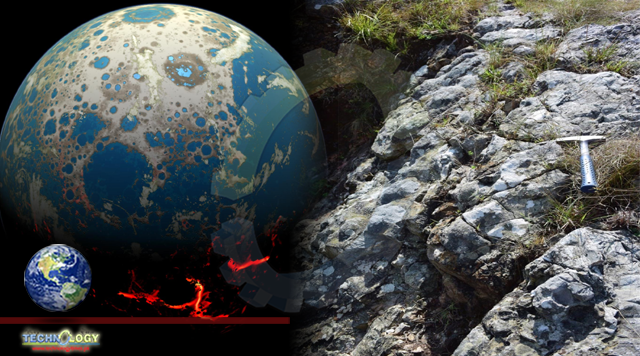Continental crust first emerged on the Earth’s surface around 3.7 billion years ago — half a billion years earlier than had been thought, a new study has revealed.

The Earth’s continental crust may have emerged 500 million years earlier than scientists had previously estimated. Pinning down when the land on Earth emerged could help us understand the conditions in which primitive life began, NewScientist reported.
Today, new oceanic crust rises at mid-ocean ridges where tectonic plates drift apart. Continental crust is usually much older, formed from volcanism where plates crash into each other – thrusting a thicker, less-dense layer above sea level.
Weathering of continental crust adds nutrients to the ocean, a process that may have played a role in supporting primordial life. The big question is: when did continental crusts start forming?
To try to answer that, Desiree Roerdink at the University of Bergen in Norway, and her colleagues analysed 30 ancient rock samples from six sites in Australia, South Africa and India. These contained barite, which can form in hydrothermal vents – fissures in the ocean floor where warm, mineral-rich waters react with seawater.
“Barites don’t really change, their chemistry contains a fingerprint of the environment in which they formed,” says Roerdink, who presented this work at a meeting of the European Geosciences Union on 26 April.
She and her team used the ratios of strontium isotopes in the deposits to infer when weathered continental rock began entering the oceans. They found that the weathering began about 3.7 billion years ago.
When the Earth formed 4.5 billion years ago it was a hellish landscape of molten rock. Eventually the planet’s outer layer cooled enough to start forming a solid crust covered by a global ocean.
That kicked off a new geological eon around 4 billion years ago, known as the Archean, which is when scientists believe life first emerged. There is strong evidence for microbial activity at least 3.5 billion years ago, but precisely when and how life began is far from clear.
Aaron Satkoski at the University of Texas at Austin says the findings suggest life could have emerged on land rather than the oceans. “This research helps us put constraints on when emergent crust would have been available for life to develop,” he says.
Originally published at Tasnim news agency